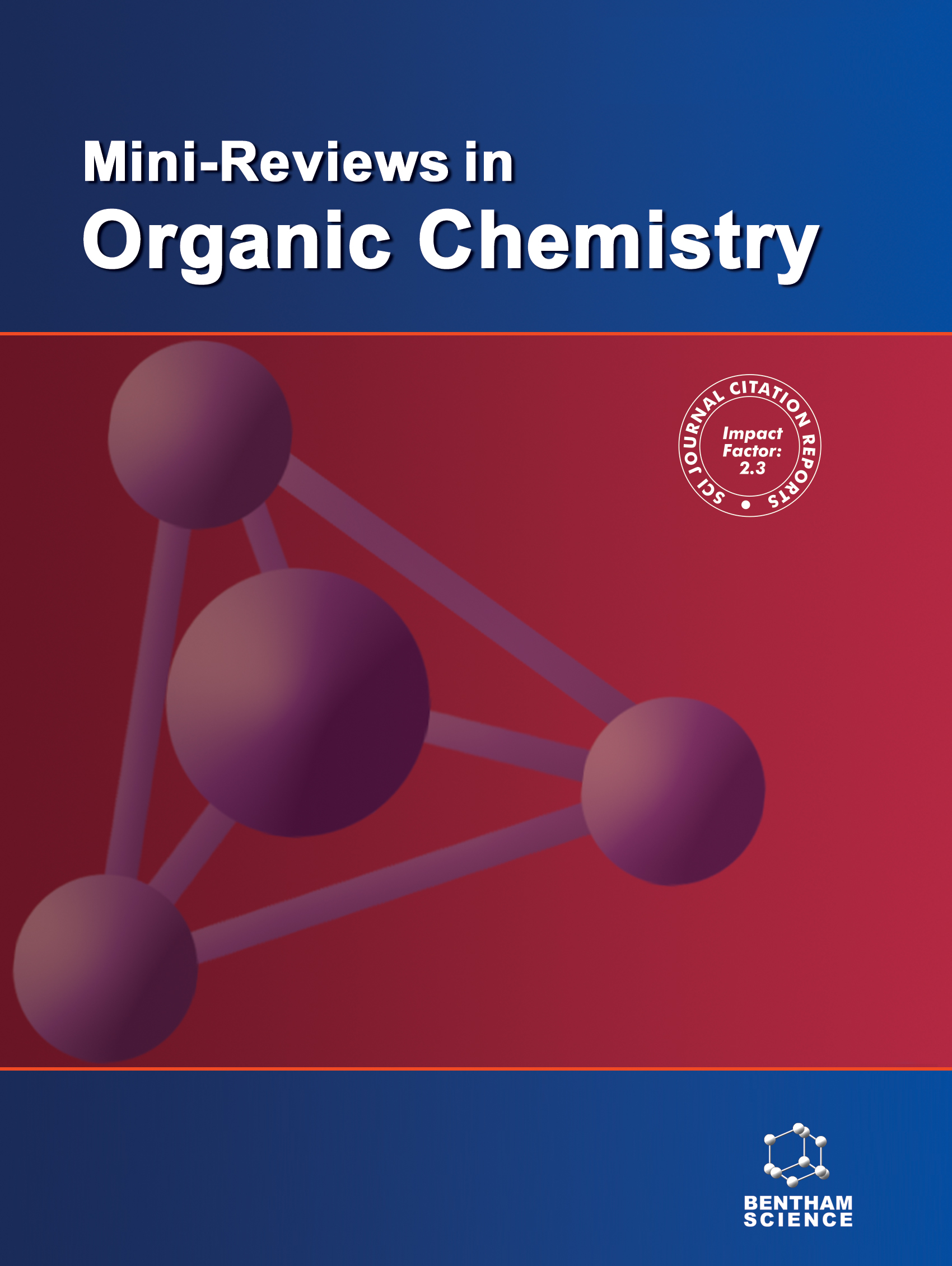- Home
- A-Z Publications
- Mini-Reviews in Organic Chemistry
- Previous Issues
- Volume 4, Issue 2, 2007
Mini-Reviews in Organic Chemistry - Volume 4, Issue 2, 2007
Volume 4, Issue 2, 2007
-
-
An Update on Catalytic Enantioselective Alkylations of Indoles
More LessAuthors: Marco Bandini, Astrid Eichholzer and Achille Umani-RonchiIndole benzylic stereocenters are molecular frameworks largely present in natural occurring compounds, with their absolute configuration being of key importance in determining the biological activity of the entire molecule. In this context, the development of new catalytic asymmetric strategies for their preparation is a research area of astonishingly rapid growth by means of organic as well as organometallic catalysts. Here, an Read More
-
-
-
Chemistry of Cavitands
More LessAuthors: Wanda Sliwa and Jerzy PeszkeIn the paper selected examples of cavitands are presented showing their binding properties. In the first part cavitands with one or two extended walls are described, the second part concerns deep cavitands, and in the third part examples of cavitands forming open capsules are given.
-
-
-
Heteroatom-Containing, Carbon-Bridged Calix[4]arene, Thiacalix[4]arene and Sulfonamide Bridged Calix[4]arene
More LessAuthors: Wen-Sheng Zhang, Yu An, Rui Liu, Bing Gong and Lan HeThis review provides a discussion of developments in heteroatom-containing, carbon-bridged calixarene and thiacalixarene. These compounds are described with regard to their syntheses and inclusion properties.
-
-
-
Chemistry and Biology of the Streptogramin A Antibiotics
More LessAuthors: Fahim Ahmed and William A. DonaldsonThe streptogramin A antibiotics have proven to be highly active against Gram positive bacteria, particularly methicillin-resistant Staphylococcus aureus. Members of this group of compounds are characterized by a 23-membered macrocycles containing polyene, oxazole, amide and ester functionality. The chemistry and biology of these valuable antimicrobial agents is covered.
-
-
-
Chemistry of the Anionically Activated Aromatic CF3 Group
More LessVarious chemistries could be accessed from the aromatic substrates containing CF3 functionality that is conjugated with the ionizable NH, OH or CH groups. The suggested mechanism involves formation of the quinone methide intermediate. It is generally accepted that these reactive species can be viewed as either C1 or C3X (X = N or CH2) synthone. Their reactions in situ with diverse electrophiles yield an array of [6,6]-fused or Read More
-
Volumes & issues
-
Volume 22 (2025)
-
Volume 21 (2024)
-
Volume 20 (2023)
-
Volume 19 (2022)
-
Volume 18 (2021)
-
Volume 17 (2020)
-
Volume 16 (2019)
-
Volume 15 (2018)
-
Volume 14 (2017)
-
Volume 13 (2016)
-
Volume 12 (2015)
-
Volume 11 (2014)
-
Volume 10 (2013)
-
Volume 9 (2012)
-
Volume 8 (2011)
-
Volume 7 (2010)
-
Volume 6 (2009)
-
Volume 5 (2008)
-
Volume 4 (2007)
-
Volume 3 (2006)
-
Volume 2 (2005)
-
Volume 1 (2004)
Most Read This Month
Article
content/journals/mroc
Journal
10
5
false
en


